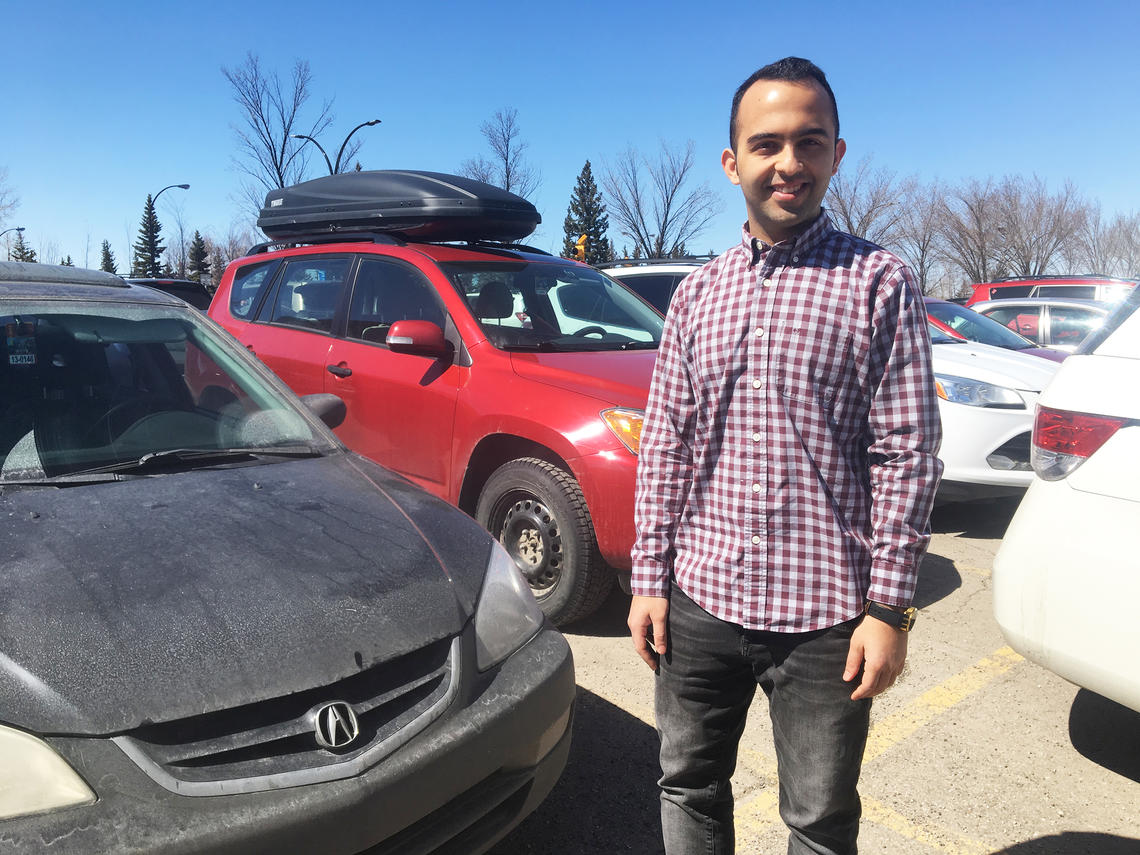April 23, 2018
Study shows first computer-driven cars will have noticeable impact on rush hour

Engineering researcher Omid Ebadi says more automated cars mean less traffic congestion.
Michael Platt, Schulich School of Engineering
You may never want to surrender the wheel, but a new University of Calgary study suggests you should hope other drivers relinquish control of their cars as the world moves to adopt automated vehicles.
According to research from the Schulich School of Engineering, even a few automated vehicles in the mix will influence all traffic for the better, and a smattering of cars controlled by computers will result in faster, smoother commutes for all motorists, no matter who — or what — is driving.
“Basically, automated vehicles influence traffic with their good behaviour, because they maintain the ideal distance and speed, and that reflects on the traffic around them by influencing the driving habits of other vehicles in their vicinity,” explains Omid Ebadi, who studied the impact of automated vehicles for his master’s thesis in civil engineering.
Imminent future of automated vehicles
Ebadi’s research paper, "The Effect of Anticipatory Adaptive Cruise Control (AACC) Systems on Mixed Traffic Flow," answers questions about the imminent future, when the first automated vehicles are part of the everyday traffic flow.
It’s expected AACC vehicles will be among the first to hit the streets, being smart vehicles that combine both connectivity and automation features, with key parts of the driving equation controlled by computer sensors, rather than the human in the driver’s seat.
In addition, information on the downstream traffic is collected through internet of things (IoT) — in other words, AACC vehicles will communicate with each other.
“It will take a long time before all traffic flow is comprised of fully intelligent technology-equipped vehicles,” says Ebadi. “In the near future, traffic will most probably be a mix of manually driven, connected and autonomous cars.”
Cruise control was the start
Having been pioneered through now commonplace cruise control, it’s expected the next generation of automated vehicles will be equipped to adjust speed to the pace of traffic, while taking cues and warnings through wireless communication with other automated vehicles on the road ahead.
With automakers chasing the goal of fully autonomous vehicles, researchers like Ebadi are measuring the impact on traffic when computers take partial control — and the Schulich grad says his research shows just a few AACC-equipped cars will make a noticeable difference on key commuter frustrations like bottlenecks. “Taking away human behaviour means more efficient traffic flow,” he summarizes.
Ebadi’s report shows:
-
In a fixed bottleneck scenario like a collision, equipping only 10 per cent of the vehicles with AACC made a significant difference.
-
An AACC-equipped vehicle can react must faster than a human to the vehicle ahead, needing only 1.5 seconds headway, compared to 2.7 seconds for manually-driven cars, meaning tighter traffic and better utilization of the road capacity.
-
The shockwave caused by a slow-moving car can be almost entirely suppressed by introducing the AACC system in all cars, and vastly reduced when 50 per cent or more cars are AACC-equipped.
Research vital for traffic planning
With automated vehicles no longer a theory, but an imminent reality, Ebadi’s supervisor and co-author, Lina Kattan, says such research is vital for traffic operation and planners.
“The key point here is that AACC can be viewed as ‘floating traffic regulators’ that play a unique role in reinforcing traffic behaviour,” explains Kattan. “In addition, they act as ‘mobile sensors’ with their potential to monitor traffic, collect precise information, and disseminate this information.”
Best scenario: we share the cars
Kattan, associate professor at Schulich and Urban Alliance Professor in Transportation Systems Optimization, says the most efficient scenario is AACC vehicles used in a car-share model.
“To create a more congestion-free city, the key is not in persuading more people to buy these cars but rather to induce them to undermine personal vehicle ownership, and to shift to autonomous car-sharing which is seamlessly integrated with transit,” she says.
“The results would be increasing mobility radically while reducing GHG emissions, lowering the demand for parking and creating the opportunity for denser, more people-friendly, walkable communities.”
